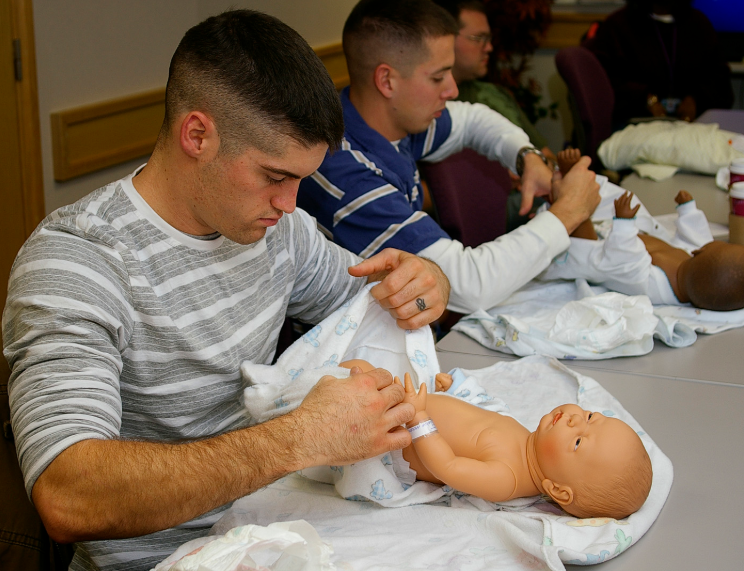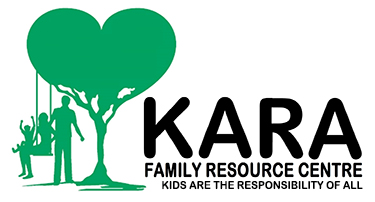
The first time I changed my oldest son’s diaper was a very memorable experience. After watching him sleep for the first hour of his life, I saw the little yellow stripe on his diaper turn blue, an indication that he had just peed. Of course, this was very exciting because my midwife told me to watch his every bodily function. Count his bowel movements. Track his nursing. And call her if he wasn’t peeing.
Being a first-time-mom and over the moon in love with him, I scooped him up and chatted away to him as I prepared everything for his first diaper change. I laid him down on my bed, next to where his Dad was peacefully snoozing after the events of child birthing (I was too exhilarated to sleep). I took the old diaper off and wiped his parts clean. Before I knew it, the cool air and wet wipe must have triggered another episode. His little wee-wee shot pee high into the air and, like all priceless, memorable moments would predict, the pee coated my husband’s sleeping face, washing away whatever moment of tranquility previously rested on the room.
I burst into silent giggles, trying to apologize through little squeaks of laughter as my husband removed himself from the room without a word.
Before We Do the Do-do
Before starting a diaper change, ensure you have everything you need. This is likely to include proper sized diapers, wet wipes, a change pad, diaper rash cream (if required), and a toy (for older babies). I also like to pack my diaper bag or change table drawers with extra pairs of pants and shirts in case things get out of control, like they did the first time.
The Dirt on Diapers
To ensure a diaper fits properly, check for signs it is too small or too big. Diapers that are too small will leave red marks around the legs or tummy. Too big, and you’ll notice the diaper isn’t catching everything, so to speak. You can use either disposable or cloth diapers. I’ve used both; cloth for my first baby when I wasn’t working and disposable for the second when I was. I found there are pros and cons for both. Cloth diapers are a hefty upfront expense (mine were $370 new) but last for years and through multiple children. They are easy to clean but take a lot of time because there’s the washing, drying, and folding involved. The best part is that they are adorable, soft, not harmful to your child, and good for the planet. Disposable diapers are a grocery expense. They don’t cost a lot at first, but if adding up from birth to potty training, it’s around $2,400. Quite the difference in price! Disposable diapers also come with fragrances and additives that can be harmful to sensitive skin. You will know if it’s irritating your little one if he or she develops a rash around the openings of the diaper.
Know Your Ointments
Zinc oxide creates an impermeable barrier to liquids. It’s actually preventing pee or poop from touching the skin it was applied to. My first baby did get a few diaper rashes and Penaten worked wonders for us! Other brands can be found here.
My second baby brought a different challenge. He was not prone to diaper rashes but did have sensitive skin. It would dry very quickly and needed moisturizing (all over his little body). For this, I used coconut oil! It worked wonderfully!
Tricky Changers
I have two tricks for my children if they are ever in the mood to put up a diapering fight! I have chewable toys to keep their hands busy and songs to help them stay calm. They rarely need the bribes but I’ve found they come in handy, especially in public washrooms.
The chewable Broccoli Bite toy I found at ToysRUs was simply marvelous! It’s 100% silicone, which means no harmful chemicals and feels just like a baby bottle. It only comes out during diaper changes too, which means it is special and not your average toy.
I also have a diapering song which I read off the wall of a washroom in a public library. It goes:
“One button, two button, three button, four,
Changing little one’s diaper like I’ve done before,
Four button, three button, two button, one,
Look we’re done! Nice clean bum! That was fun!”
Works every time!
Safety and Hygiene First
Always ensure your changing space is a safe environment. There shouldn’t be anything that can harm your child if he or she rolls off of the changing pad. Check the space. If you’re using a public change area, there should be straps to hold your child but never leave him or her unattended, even if it seems like he or she is secure. Keep one hand on the baby at all times. Never move away from your baby to get items. If you forgot to gather all of the necessary items beforehand, bring your baby with you to get them. It’s always fun to snuggle a naked baby and play the chance game that he or she won’t pee on your favourite shirt!
When thinking about safety, it’s also important to remember good hygiene. You are dealing with a lot of potentially harmful bacteria after all. Always wash your hands before and after the entire process. Also, wipe your child from front to back. This means that you clean the pee producing area before the poop producing one. Poop, if spread to other areas, can have negative impacts like rashes to skin or infections to the urinary tract (very painful and requiring doctor visits). Always practice good hygiene, if only to protect your loved ones.
Step by Step
Now down to the nitty-gritty! Ensure your hands are clean and lay your baby on his or her back. Fasten any safety belts, if available. Take the old diaper off the front and wipe around the baby parts with a clean, wet wipe, front to back, avoiding the umbilical cord stump, if present. If there are any red marks in the creases, apply your choice of ointment. If you’re changing a boy, the tale told by wizened mothers goes to cover “it” with the clean diaper. This is to prevent the unfortunate mishap that happened to my husband all those years ago. I find the clean diaper does not stay put very well. Either my son will reach down and pull it away or the pee will actually launch it into the air and have zero of the intended effect. I also found the adorable pee-pee teepees that were all the rage were a waste of resources. Cute as they were, they did not work for us. I actually place a wet wipe on the pee-pee. It doesn’t absorb the pee but it does contain it and sends it down into the dirty diaper that my son is still lying on. Hooray!
After the front is spic and span, covered, and innocent, move towards the back. Wipe front to back even if there’s no poop because bacteria isn’t visible to the naked eye. It’s still there. As you work, place the dirty wet wipes into the soiled diaper that is still open. Lift your baby’s bum into the air by holding into his or her ankles. Wipe the last of the area and remove the dirty diaper.
Place the clean diaper under at the same time. This is easy if using cloth ones. If using disposable ones, you can open it with one hand but it’s a little tricky and best to do beforehand. Apply the ointment to the bum now if needed and lay your child back down on the clean diaper. Secure the diaper and tell your child he or she did a good job!
Wrap the dirty diaper up and place it in the garbage if disposable or in your wet bag if using cloth. Keep the area clean for the next change or the next parent and baby.
So, What Did It Taste Like?
After finishing up my firstborn’s first diaper change, my husband walked back into the room. I could not help but ask! Amid attempts not to smile at the hilariousness of the situation, he murmured, “Exactly what it smells like.”
I hope your diaper changing stories are just as memorable with a hint less pee taste testing. If you need more tips on diaper changing, ask any of the KARA staff! The ladies and gentlemen that host the Books for Babies and Caring Families courses are very knowledgeable about young ones and are likely to have diaper changing stories to crack you up as well (pun intended)!
